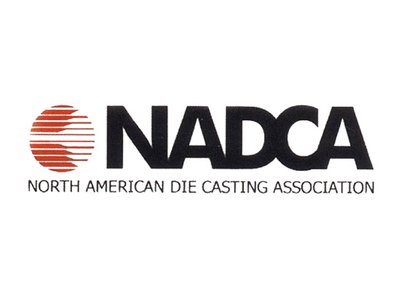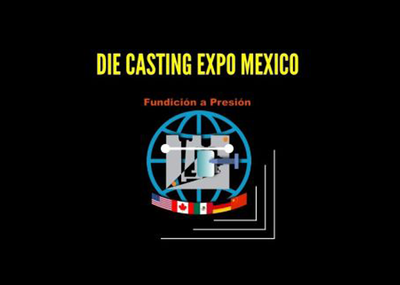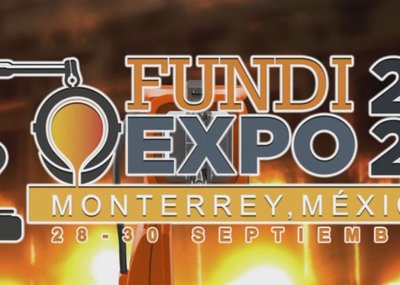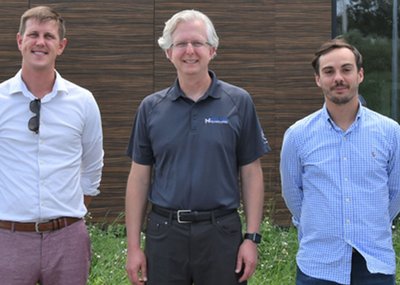FP: Steve we have known each other for a long time, how has die casting changed during your tenure?
SU:Thomas, yes, we have known each other for nearly 3 decades and it has been an absolute pleasure knowing you!
Many things have changed in die casting during my career at NADCA and things keep changing. This is why it has been exciting and enjoyable over the years. Variants of standard high pressure die casting have been developed into viable processes such as squeeze casting, semi-solid metal (SSM) processing/casting, and vacuum die casting. These processes were developed to produce higher integrity die cast products that are heat treatable and weldable. Then super high vacuum die casting with the advent of what is today referred to as structural die casting came into play. Structural die castings, as the name infers, are being utilized in truly structural applications and are crash-worthy due to the high ductility that can be achieved.
Alloy development over the years has continued to enhance the performance capability of aluminum, zinc, and magnesium die castings. For instance, strength, ductility, and temperature resistance have been improved in each of these 3 alloy families. Due to process improvements and new alloys, standard high pressure aluminum alloy die castings today can be produced to be heat treatable and weldable, and of higher ductility.
New die materials have been developed to extend die life through higher impact strength and thermal fatigue resistance. New die coatings have been developed to mitigate soldering and greatly reduce die spray usage – and in some cases, even eliminate the need for die spray in areas of the die. Additive Manufacturing (AM) processes have matured to the extent to where die components today are being produced by AM with complex cooling channels for superior thermal management of the die casting process.
Computer modeling has progressed from rough flow simulation to a highly useful and accurate tool for casting design, die design, and process design.
A more obvious change has been the size of die castings with the continued progression of die casting machine size. Two decades ago, a 2500 Ton machine was considered large. Then came 4000 Ton machines, a few years ago 8000 Ton became a reality, then 9000 Ton. I’m not sure where this will end and what may be beyond giga presses.
Today, we also have Industry 4.0, smart manufacturing and machine learning. So, there is much that has changed, and technological advancements continue!
FP: Are there differences between the big markets, USA and Mexico, Europe and Asia?
The largest market served by die casting in the USA and Mexico is automotive followed by the housing market. The largest market served by die casting in Europe and Asia is also automotive. I suspect housing is the second largest market served in Europe and Asia, as well.
FP: The development of giga- or mega-castings was ridiculed at the beginning, but now we are seeing a boom from what we hear from China, but also from Europe and the USA.
Is this a development only for EOM or does it also make sense for Tier 1 or 2 suppliers?
This is a very good question and both the OEMs and Tier 1 or 2 suppliers are wrestling with this. What makes this difficult is the size of the investment required to produce giga or mega castings. There are few suppliers that can afford the capital expense that is required and those that do, want to be certain that there is a reasonable return on the investment. This return is related to the volume of giga casting business and the suppliers would like a guaranteed level of business or the OEMs to share the investment. With such a guarantee and/or sharing of investment cost, it may also make sense for Tier 1 and 2 supplier die casters as well as OEMs. A supplier that chooses to make the investment without a guarantee or sharing of investment, understands the risk involved, and there are very few of these suppliers.
FP: Where do you estimate the natural or better physical or metallurgical limit for large structural components?
SU: We are already above what I would have estimated as limit a few short years ago. The industry has been able to overcome machine size limitation, pour weights, and flow distances. Concepts such as dual shot sleeves or multiple shot ends feeding dies as large as an entire vehicle body may come to fruition in the future to push beyond today’s limit. So perhaps, our imagination is really the limit!
FP: Do you see alternative applications also for other parts maybe even independent of the automotive industry?
Absolutely. Something else that has changed in die casting recently is the focus on sustainability. With sustainability comes renewable energy. So for instance, there are opportunities for die casting applications in wind power, solar power, and battery storage.
FP: What developments are on the horizon for die casting and gravity die casting in general, what can we expect in the future and what technical developments do you see coming our way?
Here are a few developments on the horizon.
- Additive Manufacturing of larger and larger die components as well as of molds for gravity pour processes.
- On demand melting of alloys on a shot-by-shot basis for die casting, or pour-by-pour basis for gravity processes.
- Die casting of higher temperature materials such as steel, nickel, and titanium.
FP: What about rheocasting, thixoxcasting, thixoinjector casting or other formats, do you think this is an interesting development.
Yes. These methods of Semi-Solid Metal processing provide good benefits, such as longer die life, shorter solidification time, good filling, soundness, and excellent properties. Since castings produced by these methods are a little more expensive compared to standard high pressure die casting, one needs to take advantage of the benefits for cost effectiveness of the end product. In some instances, a lower tonnage machine can be used to produce a part as compared to the tonnage of a standard high pressure die casting machines. This can assist in reducing the cost of the part, thereby enhancing cost effectiveness.
FP: The USA and Mexico seem to be very well positioned in the field of light metal casting now. Is this a general trend or a side effect of the IRA?
I believe this is a general trend driven by market demand. Additionally, more organizations are looking for die casters that are near their production facilities. While supply chain issues have been for the most part resolved, there is still concern about future issues. Also, continued tariffs have helped somewhat to level the playing field. Finally, the desire for a closer supply base is advantageous when there are design or production related changes.
FP: For many people, the USA is still the land of unlimited opportunity, what will mobility in America look like in 20 years’ time?
Mobility in 20 years will be highly electrified and autonomous. Passenger vehicles will be electric and/or fuel cell driven and self-driven. All occupants of a vehicle will be passengers (no driver) who will simply define a destination and enjoy the ride from point A to point B. Seating will be adjustable for privacy or facing each other for group meetings or conversation during transit. There will be special lanes on roads and highways to accommodate autonomous vehicles. Travel by air will likely be autonomous as well. To support this technology, there will need to be significant infrastructure investments made, such as superhighways and charging stations.
FP: All the best for you Steve, many thanks for the good cooperation, much joy and health for the future and welcome Mike. Foundry-Planet wishes you a good start and Glück auf!
Thomas, thank you for the opportunity to share these perspectives with Foundry-Planet.


